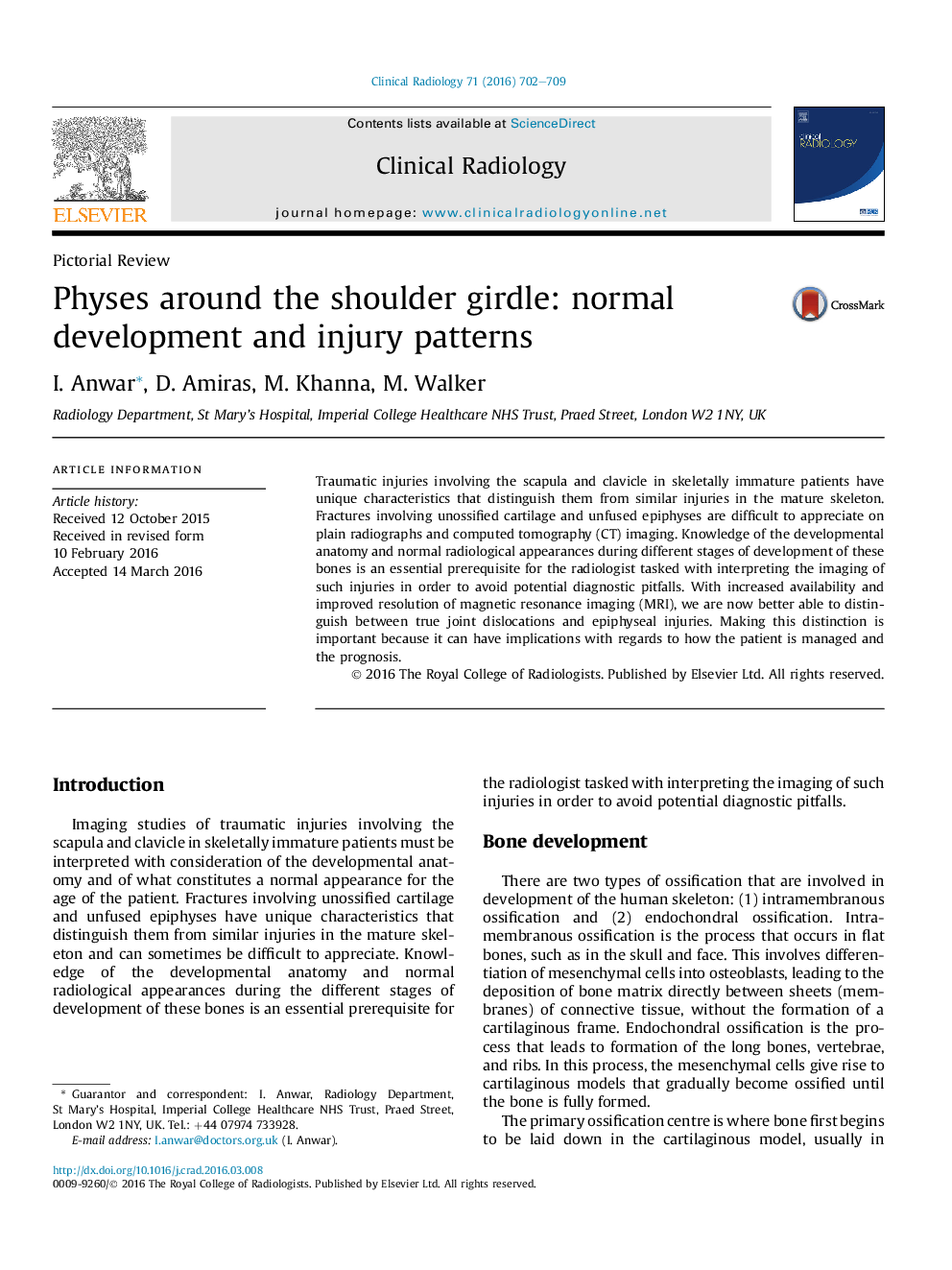| Article ID | Journal | Published Year | Pages | File Type |
|---|---|---|---|---|
| 3981180 | Clinical Radiology | 2016 | 8 Pages |
Traumatic injuries involving the scapula and clavicle in skeletally immature patients have unique characteristics that distinguish them from similar injuries in the mature skeleton. Fractures involving unossified cartilage and unfused epiphyses are difficult to appreciate on plain radiographs and computed tomography (CT) imaging. Knowledge of the developmental anatomy and normal radiological appearances during different stages of development of these bones is an essential prerequisite for the radiologist tasked with interpreting the imaging of such injuries in order to avoid potential diagnostic pitfalls. With increased availability and improved resolution of magnetic resonance imaging (MRI), we are now better able to distinguish between true joint dislocations and epiphyseal injuries. Making this distinction is important because it can have implications with regards to how the patient is managed and the prognosis.
